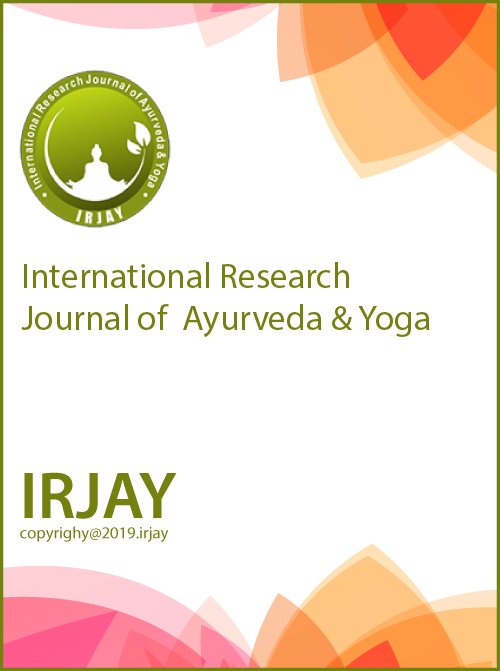Effect of Triphaladi Choornam Mouthwash and Chlorhexidine Gluconate Mouthwash in Radio-Chemotherapy Induced Oral Mucositis in Non Metastatic Squamous Cell Carcinoma of Head and Neck: A Comparative Study
DOI:
https://doi.org/10.48165/IRJAY.2023.6401Keywords:
Head and neck cancer, Oral mucositis, Radiotherapy, Triphaladi choornamAbstract
Background: The cases of lung and mouth cancer have boomed in the last decade due to various reasons, the major one being tobacco consumption. In non-metastatic squamous cell cancer of the head and neck, oral mucositis becomes prominent, especially during chemo or radiotherapy. Such patients also often suffer from stomatitis, xerostomia and pharyngitis. Materials and methods: This comparative study comprises of 36 patients undergoing chemo and radiotherapy. Here, 18 patients each are randomly allocated in two groups. One group receiving the existing prophylactic treatment i.e., chlorhexidine gluconate mouthwash and the other group received, Triphaladi choornam for gargling. Both the groups were asked to perform gargling, from the first day of radiation therapy to 21 days thereafter. Analytical tools: The effectiveness of both mouthwashes was compared for their healing potential and quality of life by WHO oral mucositis scale and Patient Reported Oral Mucositis Symptoms (PROMS)scale respectively. Conclusion: The reduction in mucositis and betterment of quality of life was significant in the group which received ayurvedic mouthwash compared to the prophylactic treatment group.
Downloads
References
A SA. Review of Pharmacology of Cisplatin:Clinical use,Toxicity and Mechanism of resistance of Cisplatin. Biomedical and Pharmacology Journal. 2019 .
Abhishek S SRBRSea. Current Trends in management of Oral Mucositis in Cancer Treatment. Asian Pacific Journal of Cancer Prevention. 2019 : p. 2019-2026.
Anty K MGRMF. Induction chemotherapy in head and neck cancer squamous cell carcinoma:A Quesion of Belief. Cancers. 2018 : p. 11-15.
Bray F FJIRA. Epidemiology and Risk factors for Head and Neck Cancer. CA Cancer J Cin. 2018: p. 68(6);394. 5. Bail al. STSJRL JBEFGWHLDe. Validation of new scoring system for the assesment of clinical trial research of oral mucositis induced by radiation or chemotherapy. Wiley online Library. 2000.
Carols A M MGS. Prevention and Treatment of Oral Mucositis in Patients receiving Chemotherapy. Oral Medicine and Pathology. 2013: p. 74-80.
Wanjarkhedkar P SPSSKPSGPHKCD. An Ayurvedic Gargle Regimen in Management of Radiotherapy induced Oral Mucositis. South Asian J of Cancer. 2021: p. 9(4);250-252.
Vidhya R MABS. An Update on Triphala: A Potential Anticancer Ayurvedic Herb to Battle Cancer. Drug Invention Today. 2020: p. 163168.
Najafi S SEKMJK,KH. Preventive Effect of Glycyrrhiza glabra extract on oral mucositis in patients under head and neck radiotherapy:A Randomized Clinical Trial. Journal of Dentistry. 2017; 14(5): p. 267-274.
Maddireddy F, GVRURKMSaPR. Chemotherapy-Induced and/or Radiation Therapy-Induced Oral Mucositis Complicating the Treatment of Cancer. Neoplasia. 2004; 6: p. 423-431.
Philip O. Anderson JEKGT. Handbook of Cinical Drug Data. In 10 , editor. USA: The McGraw Hill Companies; 2001.

